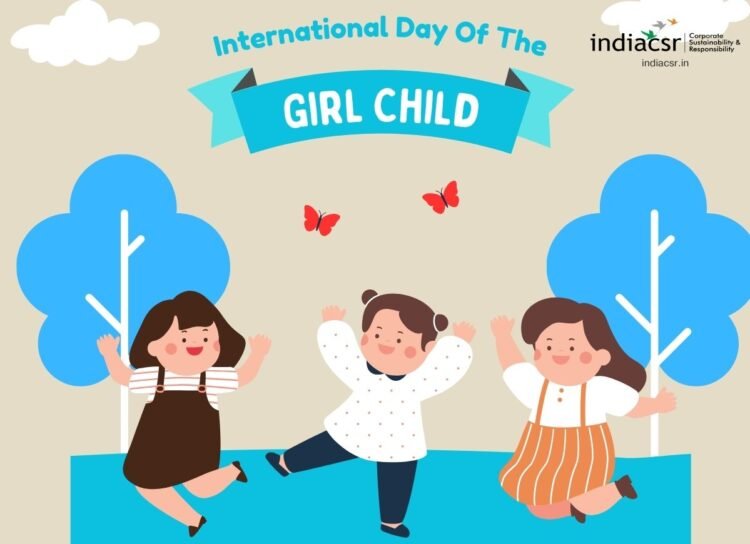The theme of International Day of the Girl Child 2023 is ‘Invest in Girls’ Rights: Our Leadership, Our Well-being,’ according to United Nations.
International Girl Child Day is a global observance that celebrates the rights and achievements of girls and calls for action to end the challenges and discrimination they face. It is celebrated every year on October 11, since 2012, when the United Nations General Assembly declared it as a special day for girls. The day aims to empower girls to fulfil their potential and contribute to the development of their communities and the world.
Date
International Girl Child Day is observed every year on October 11.
History
The United Nations General Assembly adopted Resolution 66/170 on December 19, 2011, to declare October 11 as the International Day of the Girl Child, to recognize girls’ rights and the unique challenges girls face around the world. The resolution was based on the recommendations of the Third Committee of the General Assembly, which had earlier adopted a draft resolution on the girl child on November 18, 2011. The resolution was co-sponsored by more than 100 countries and supported by various UN agencies, civil society organizations, and girl activists.
Significance
The International Day of the Girl Child focuses attention on the need to address the challenges girls face and to promote girls’ empowerment and the fulfilment of their human rights. The day also aims to highlight the achievements and potential of girls in various fields, such as education, health, leadership, science, technology, arts, and sports. The day also calls for action to end all forms of discrimination, violence, and harmful practices against girls, such as child marriage, female genital mutilation, sexual abuse, trafficking, and forced labor.
Celebrations and Important Facts
- The theme of International Day of the Girl Child 2023 is ‘Invest in Girls’ Rights: Our Leadership, Our Well-being,’ according to United Nations. The theme emphasizes the need for increased attention and resourcing for the key areas that enable girls to realize their rights and achieve their full potential.
- The UNICEF and Plan International are organizing a virtual event on October 11, 2023, at 09:30 AM (New York time), to unite adolescent girls with advocates for their rights, including UN leaders, NGOs, businesses, and governments. The event will showcase a world where girls actively influence government policies, business practices, and research priorities.
- According to UNICEF, there are more than 1.1 billion girls in the world today, and they are part of a large and vibrant generation ready to take on the future. However, they also face many challenges that hinder their development and well-being, such as poverty, inequality, violence, lack of education, health care, and opportunities.
- According to UNESCO, more than 130 million girls are out of school worldwide, and girls are more likely than boys to never enter or complete primary or secondary education. Girls also face barriers in accessing quality education due to gender stereotypes, social norms, cultural practices, and inadequate infrastructure.
- According to UN Women, one in three women worldwide experience physical or sexual violence in their lifetime, mostly by an intimate partner. Violence against women and girls has increased during the COVID-19 pandemic due to lockdowns, isolation, economic stress, and reduced access to services.
- According to UNFPA, more than 650 million women alive today were married as children. Every year, 12 million girls are married before the age of 18. Child marriage violates girls’ rights and exposes them to risks of early pregnancy, maternal mortality, domestic violence, and poverty.
- According to WHO, more than 200 million girls and women alive today have undergone female genital mutilation (FGM) in 31 countries where the practice is concentrated. FGM is a harmful practice that involves partial or total removal of the external female genitalia for non-medical reasons. FGM can cause severe bleeding, infections, infertility, complications in childbirth, and increased risk of newborn deaths.




















